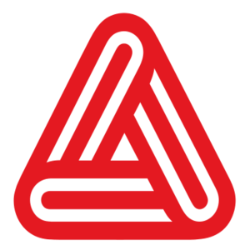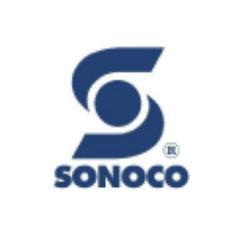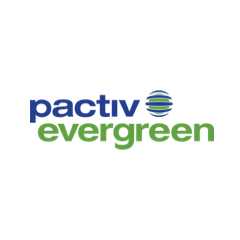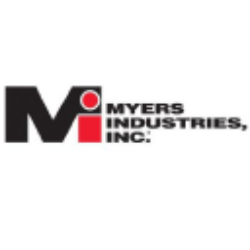AVY

Avery Dennison Corporation
AVY
(2.0)188,36 USD
11.45% ROA
29.91% ROE
27.38x PER
17.268.104.740,00 USD
140.74% DER
1.58% Yield
7.76% NPM
Avery Dennison Corporation Stock Analysis
Avery Dennison Corporation Fundamental Analysis
Fundamental analysis in stock investing is like studying the foundation of a house before buying it. It involves looking at a company's financial health, like its earnings, assets, and debts, to determine if it's a good investment based on its fundamental strength and potential for growth.
| # | Analysis | Rating |
|---|---|---|
| 1 |
ROE
The stock's ROE exceeds expectations (23.68%), revealing strong profitability and efficient use of shareholders' equity, making it an attractive investment opportunity. |
|
| 2 |
Dividend Growth
The company's dividend growth has exhibited a remarkable upward trend over the past five years, consistently delivering higher returns to investors. |
|
| 3 |
Dividend
The company's consistent dividend distribution over the past five years reflects its dedication to providing shareholders with steady returns, making it an appealing choice for investors seeking income stability. |
|
| 4 |
ROA
The stock's ROA (9.12%) shows that it's doing a pretty good job at making money from its assets, making it a solid choice to invest and earn steady profits. |
|
| 5 |
Buffet Intrinsic Value
The company's stock seems undervalued (4.030) by Warren Buffett's formula, indicating a promising investment opportunity as its intrinsic value exceeds the market price. |
|
| 6 |
PBV
The stock's high Price-to-Book Value (P/BV) ratio (7.42x) suggests it's overvalued, potentially making it an expensive investment. |
|
| 7 |
DER
The company has a high debt to equity ratio (161%), which means it owes a lot of money compared to what it actually owns, making it financially risky. |
|
| 8 |
Revenue Growth
Company's revenue has remained stagnant over the past three years, indicating a lack of growth and making it a less favorable option. |
|
| 9 |
Net Profit Growth
Despite the passage of five years, this company's net profit has not shown any improvement, highlighting a lack of growth and making it a less appealing investment prospect. |
|
| 10 |
Assets Growth
Company's revenue has remained stagnant over the past three years, indicating a lack of growth and making it a less favorable option. |
|
| 11 |
Graham Number
The Graham number calculation reveals that this company's stock price is potentially inflated, implying that it may not be a desirable investment option. |
Avery Dennison Corporation Technical Analysis
Technical analysis in stock investing is like reading the patterns on a weather map to predict future weather conditions. It involves studying past stock price movements and trading volumes to make predictions about where a stock's price might go next, without necessarily looking at the company's financial health.
| # | Analysis | Recommendation |
|---|---|---|
| 1 | Awesome Oscillator | Hold |
| 2 | MACD | Buy |
| 3 | RSI | Hold |
| 4 | Stoch RSI | Sell |
Avery Dennison Corporation Price Chart
Financial Statements
Financial statements are like report cards for companies. They show how much money a company makes (income statement), what it owns and owes (balance sheet), and where it spends its money (cash flow statement), helping stock investors understand if a company is healthy and worth investing in.
Income Statements
An income statement for a company is like a scoreboard for its profits and losses. It shows how much money the company made (revenue) and how much it spent to make that money (expenses), helping stock investors see if a company is making a profit or not.
Revenue in stock investing is the total amount of money a company earns from its sales, and it's a key factor that investors consider to assess a company's financial performance and growth potential.
| Year | Revenue | Growth |
|---|---|---|
| 1985 | 932.700.000 | |
| 1986 | 1.131.200.000 | 17.55% |
| 1987 | 1.465.500.000 | 22.81% |
| 1988 | 1.582.000.000 | 7.36% |
| 1989 | 1.732.400.000 | 8.68% |
| 1990 | 2.590.200.000 | 33.12% |
| 1991 | 2.545.100.000 | -1.77% |
| 1992 | 2.622.900.000 | 2.97% |
| 1993 | 2.608.700.000 | -0.54% |
| 1994 | 2.856.700.000 | 8.68% |
| 1995 | 3.113.900.000 | 8.26% |
| 1996 | 3.222.500.000 | 3.37% |
| 1997 | 3.345.700.000 | 3.68% |
| 1998 | 3.459.900.000 | 3.3% |
| 1999 | 3.768.200.000 | 8.18% |
| 2000 | 3.893.500.000 | 3.22% |
| 2001 | 3.803.300.000 | -2.37% |
| 2002 | 4.206.900.000 | 9.59% |
| 2003 | 4.762.600.000 | 11.67% |
| 2004 | 5.340.900.000 | 10.83% |
| 2005 | 5.473.500.000 | 2.42% |
| 2006 | 5.575.900.000 | 1.84% |
| 2007 | 6.307.800.000 | 11.6% |
| 2008 | 6.710.400.000 | 6% |
| 2009 | 5.952.700.000 | -12.73% |
| 2010 | 6.512.700.000 | 8.6% |
| 2011 | 6.026.300.000 | -8.07% |
| 2012 | 6.035.600.000 | 0.15% |
| 2013 | 6.140.000.000 | 1.7% |
| 2014 | 6.330.300.000 | 3.01% |
| 2015 | 5.966.900.000 | -6.09% |
| 2016 | 6.086.500.000 | 1.97% |
| 2017 | 6.613.800.000 | 7.97% |
| 2018 | 7.159.000.000 | 7.62% |
| 2019 | 7.070.100.000 | -1.26% |
| 2020 | 6.971.500.000 | -1.41% |
| 2021 | 8.408.300.000 | 17.09% |
| 2022 | 9.039.300.000 | 6.98% |
| 2023 | 8.393.200.000 | -7.7% |
| 2023 | 8.364.299.999 | -0.35% |
| 2024 | 8.941.200.000 | 6.45% |
Research and Development Expenses are the costs a company incurs to create and improve its products or services, which can be important for investors to evaluate a company's innovation and potential for future growth.
| Year | Research and Development Expenses | Growth |
|---|---|---|
| 1985 | 0 | |
| 1986 | 0 | 0% |
| 1987 | 0 | 0% |
| 1988 | 0 | 0% |
| 1989 | 0 | 0% |
| 1990 | 0 | 0% |
| 1991 | 0 | 0% |
| 1992 | 0 | 0% |
| 1993 | 0 | 0% |
| 1994 | 0 | 0% |
| 1995 | 0 | 0% |
| 1996 | 0 | 0% |
| 1997 | 0 | 0% |
| 1998 | 0 | 0% |
| 1999 | 0 | 0% |
| 2000 | 0 | 0% |
| 2001 | 0 | 0% |
| 2002 | 0 | 0% |
| 2003 | 0 | 0% |
| 2004 | 0 | 0% |
| 2005 | 0 | 0% |
| 2006 | 0 | 0% |
| 2007 | 0 | 0% |
| 2008 | 0 | 0% |
| 2009 | 0 | 0% |
| 2010 | 0 | 0% |
| 2011 | 0 | 0% |
| 2012 | 98.600.000 | 100% |
| 2013 | 96.000.000 | -2.71% |
| 2014 | 102.500.000 | 6.34% |
| 2015 | 91.900.000 | -11.53% |
| 2016 | 89.700.000 | -2.45% |
| 2017 | 93.400.000 | 3.96% |
| 2018 | 98.200.000 | 4.89% |
| 2019 | 92.600.000 | -6.05% |
| 2020 | 112.800.000 | 17.91% |
| 2021 | 136.600.000 | 17.42% |
| 2022 | 136.100.000 | -0.37% |
| 2023 | 0 | 0% |
| 2023 | 135.800.000 | 100% |
| 2024 | 0 | 0% |
General and Administrative Expenses are the costs a company incurs to run its day-to-day operations, such as office rent, salaries, and utilities, which investors consider to understand a company's overall efficiency and management effectiveness.
| Year | General and Administrative Expenses | Growth |
|---|---|---|
| 1985 | 0 | |
| 1986 | 0 | 0% |
| 1987 | 0 | 0% |
| 1988 | 0 | 0% |
| 1989 | 0 | 0% |
| 1990 | 0 | 0% |
| 1991 | 0 | 0% |
| 1992 | 0 | 0% |
| 1993 | 0 | 0% |
| 1994 | 0 | 0% |
| 1995 | 0 | 0% |
| 1996 | 0 | 0% |
| 1997 | 0 | 0% |
| 1998 | 0 | 0% |
| 1999 | 0 | 0% |
| 2000 | 0 | 0% |
| 2001 | 0 | 0% |
| 2002 | 0 | 0% |
| 2003 | 0 | 0% |
| 2004 | 0 | 0% |
| 2005 | 0 | 0% |
| 2006 | 0 | 0% |
| 2007 | 0 | 0% |
| 2008 | 0 | 0% |
| 2009 | 0 | 0% |
| 2010 | 0 | 0% |
| 2011 | 0 | 0% |
| 2012 | 1.179.400.000 | 100% |
| 2013 | 0 | 0% |
| 2014 | 1.155.300.000 | 100% |
| 2015 | 1.108.100.000 | -4.26% |
| 2016 | 1.097.500.000 | -0.97% |
| 2017 | 1.123.200.000 | 2.29% |
| 2018 | 0 | 0% |
| 2019 | 0 | 0% |
| 2020 | 0 | 0% |
| 2021 | 1.111.900.000 | 100% |
| 2022 | 1.194.700.000 | 6.93% |
| 2023 | 0 | 0% |
| 2023 | 1.177.900.000 | 100% |
| 2024 | 0 | 0% |
EBITDA stands for Earnings Before Interest, Taxes, Depreciation, and Amortization. It is a measure that helps stock investors analyze a company's profitability by looking at its earnings without considering certain expenses. This helps to get a clearer picture of the company's financial performance and its ability to generate cash flow.
| Year | EBITDA | Growth |
|---|---|---|
| 1985 | 113.900.000 | |
| 1986 | 128.000.000 | 11.02% |
| 1987 | 161.000.000 | 20.5% |
| 1988 | 191.000.000 | 15.71% |
| 1989 | 204.500.000 | 6.6% |
| 1990 | 145.700.000 | -40.36% |
| 1991 | 234.600.000 | 37.89% |
| 1992 | 266.400.000 | 11.94% |
| 1993 | 270.800.000 | 1.62% |
| 1994 | 318.400.000 | 14.95% |
| 1995 | 375.400.000 | 15.18% |
| 1996 | 419.300.000 | 10.47% |
| 1997 | 459.700.000 | 8.79% |
| 1998 | 498.500.000 | 7.78% |
| 1999 | 589.200.000 | 15.39% |
| 2000 | 637.800.000 | 7.62% |
| 2001 | 555.700.000 | -14.77% |
| 2002 | 583.900.000 | 4.83% |
| 2003 | 609.100.000 | 4.14% |
| 2004 | 690.500.000 | 11.79% |
| 2005 | 753.400.000 | 8.35% |
| 2006 | 751.400.000 | -0.27% |
| 2007 | 774.500.000 | 2.98% |
| 2008 | 737.300.000 | -5.05% |
| 2009 | -445.199.999 | 265.61% |
| 2010 | 558.100.000 | 179.77% |
| 2011 | 546.200.000 | -2.18% |
| 2012 | 544.500.000 | -0.31% |
| 2013 | 631.500.000 | 13.78% |
| 2014 | 629.200.000 | -0.37% |
| 2015 | 657.700.000 | 4.33% |
| 2016 | 717.000.000 | 8.27% |
| 2017 | 829.400.000 | 13.55% |
| 2018 | 794.300.000 | -4.42% |
| 2019 | 557.500.000 | -42.48% |
| 2020 | 1.062.000.000 | 47.5% |
| 2021 | 1.306.900.000 | 18.74% |
| 2022 | 1.374.100.000 | 4.89% |
| 2023 | 1.348.000.000 | -1.94% |
| 2023 | 1.112.100.000 | -21.21% |
| 2024 | 1.469.600.000 | 24.33% |
Gross profit is the money a company makes from selling its products or services after subtracting the cost of producing or providing them, and it is an important measure for investors to understand a company's profitability.
| Year | Gross Profit | Growth |
|---|---|---|
| 1985 | 332.900.000 | |
| 1986 | 401.100.000 | 17% |
| 1987 | 520.500.000 | 22.94% |
| 1988 | 558.700.000 | 6.84% |
| 1989 | 589.800.000 | 5.27% |
| 1990 | 898.400.000 | 34.35% |
| 1991 | 888.500.000 | -1.11% |
| 1992 | 932.100.000 | 4.68% |
| 1993 | 913.500.000 | -2.04% |
| 1994 | 1.010.300.000 | 9.58% |
| 1995 | 1.065.200.000 | 5.15% |
| 1996 | 1.131.700.000 | 5.88% |
| 1997 | 1.199.500.000 | 5.65% |
| 1998 | 1.271.700.000 | 5.68% |
| 1999 | 1.431.800.000 | 11.18% |
| 2000 | 1.489.100.000 | 3.85% |
| 2001 | 1.240.200.000 | -20.07% |
| 2002 | 1.353.700.000 | 8.38% |
| 2003 | 1.458.000.000 | 7.15% |
| 2004 | 1.579.500.000 | 7.69% |
| 2005 | 1.621.100.000 | 2.57% |
| 2006 | 1.528.400.000 | -6.07% |
| 2007 | 1.722.400.000 | 11.26% |
| 2008 | 1.727.000.000 | 0.27% |
| 2009 | 1.586.500.000 | -8.86% |
| 2010 | 1.826.000.000 | 13.12% |
| 2011 | 1.521.400.000 | -20.02% |
| 2012 | 1.577.100.000 | 3.53% |
| 2013 | 1.637.700.000 | 3.7% |
| 2014 | 1.651.200.000 | 0.82% |
| 2015 | 1.645.800.000 | -0.33% |
| 2016 | 1.699.700.000 | 3.17% |
| 2017 | 1.812.200.000 | 6.21% |
| 2018 | 1.915.500.000 | 5.39% |
| 2019 | 1.904.100.000 | -0.6% |
| 2020 | 1.923.300.000 | 1% |
| 2021 | 2.312.800.000 | 16.84% |
| 2022 | 2.404.200.000 | 3.8% |
| 2023 | 2.343.200.000 | -2.6% |
| 2023 | 2.277.499.999 | -2.88% |
| 2024 | 2.650.800.000 | 14.08% |
Net income in stock investing is like the money a company actually gets to keep as profit after paying all its bills, and it's an important measure to understand how well a company is doing financially.
| Year | Net Profit | Growth |
|---|---|---|
| 1985 | 48.300.000 | |
| 1986 | 48.600.000 | 0.62% |
| 1987 | 34.700.000 | -40.06% |
| 1988 | 77.700.000 | 55.34% |
| 1989 | 86.500.000 | 10.17% |
| 1990 | 5.900.000 | -1366.1% |
| 1991 | 63.000.000 | 90.63% |
| 1992 | 80.100.000 | 21.35% |
| 1993 | 84.400.000 | 5.09% |
| 1994 | 109.400.000 | 22.85% |
| 1995 | 143.700.000 | 23.87% |
| 1996 | 175.900.000 | 18.31% |
| 1997 | 204.800.000 | 14.11% |
| 1998 | 223.300.000 | 8.28% |
| 1999 | 215.400.000 | -3.67% |
| 2000 | 283.500.000 | 24.02% |
| 2001 | 243.200.000 | -16.57% |
| 2002 | 257.200.000 | 5.44% |
| 2003 | 267.900.000 | 3.99% |
| 2004 | 279.700.000 | 4.22% |
| 2005 | 226.400.000 | -23.54% |
| 2006 | 367.200.000 | 38.34% |
| 2007 | 303.500.000 | -20.99% |
| 2008 | 266.100.000 | -14.05% |
| 2009 | -746.700.000 | 135.64% |
| 2010 | 316.900.000 | 335.63% |
| 2011 | 190.100.000 | -66.7% |
| 2012 | 215.400.000 | 11.75% |
| 2013 | 215.800.000 | 0.19% |
| 2014 | 248.900.000 | 13.3% |
| 2015 | 274.300.000 | 9.26% |
| 2016 | 320.700.000 | 14.47% |
| 2017 | 281.800.000 | -13.8% |
| 2018 | 467.400.000 | 39.71% |
| 2019 | 303.600.000 | -53.95% |
| 2020 | 555.900.000 | 45.39% |
| 2021 | 740.100.000 | 24.89% |
| 2022 | 757.100.000 | 2.25% |
| 2023 | 553.200.000 | -36.86% |
| 2023 | 503.000.000 | -9.98% |
| 2024 | 707.200.000 | 28.87% |
EPS, or earnings per share, is a measure that shows how much profit a company has earned for each outstanding share of its stock, and it is important for stock investors as it helps understand the profitability of a company and compare it with other companies in the market.
| Year | Earning per Share (EPS) | Growth |
|---|---|---|
| 1985 | 0 | |
| 1986 | 0 | 0% |
| 1987 | 0 | 0% |
| 1988 | 0 | 0% |
| 1989 | 0 | 0% |
| 1990 | 0 | 0% |
| 1991 | 0 | 0% |
| 1992 | 0 | 0% |
| 1993 | 0 | 0% |
| 1994 | 1 | 0% |
| 1995 | 1 | 100% |
| 1996 | 2 | 0% |
| 1997 | 2 | 0% |
| 1998 | 2 | 50% |
| 1999 | 2 | 0% |
| 2000 | 3 | 0% |
| 2001 | 2 | 0% |
| 2002 | 3 | 0% |
| 2003 | 3 | 0% |
| 2004 | 3 | 0% |
| 2005 | 2 | 0% |
| 2006 | 4 | 33.33% |
| 2007 | 3 | 0% |
| 2008 | 3 | -50% |
| 2009 | -7 | 128.57% |
| 2010 | 3 | 450% |
| 2011 | 2 | -100% |
| 2012 | 2 | 50% |
| 2013 | 2 | 0% |
| 2014 | 3 | 0% |
| 2015 | 3 | 33.33% |
| 2016 | 4 | 0% |
| 2017 | 3 | 0% |
| 2018 | 6 | 40% |
| 2019 | 4 | -66.67% |
| 2020 | 7 | 50% |
| 2021 | 9 | 25% |
| 2022 | 9 | 11.11% |
| 2023 | 7 | -50% |
| 2023 | 6 | 0% |
| 2024 | 9 | 25% |
Cashflow Statements
Cashflow statements show the movement of money in and out of a company, helping stock investors understand how much money a company makes and spends. By examining cashflow statements, investors can assess if a company is generating enough cash to pay its bills, invest in growth, and provide returns to stockholders.
Free cash flow is the leftover cash that a company generates after covering its operating expenses and capital expenditures, which is important for stock investors as it shows how much money a company has available to invest in growth, pay dividends, or reduce debt.
| Year | Free Cashflow | Growth |
|---|---|---|
| 1990 | -59.300.000 | |
| 1991 | 108.000.000 | 154.91% |
| 1992 | 80.000.000 | -35% |
| 1993 | 138.600.000 | 42.28% |
| 1994 | 101.700.000 | -36.28% |
| 1995 | -2.400.000 | 4337.5% |
| 1996 | 116.400.000 | 102.06% |
| 1997 | 191.100.000 | 39.09% |
| 1998 | 232.200.000 | 17.7% |
| 1999 | 81.700.000 | -184.21% |
| 2000 | 211.600.000 | 61.39% |
| 2001 | 240.100.000 | 11.87% |
| 2002 | 371.000.000 | 35.28% |
| 2003 | 133.500.000 | -177.9% |
| 2004 | 338.000.000 | 60.5% |
| 2005 | 253.300.000 | -33.44% |
| 2006 | 315.500.000 | 19.71% |
| 2007 | 244.600.000 | -28.99% |
| 2008 | 348.100.000 | 29.73% |
| 2009 | 466.200.000 | 25.33% |
| 2010 | 378.100.000 | -23.3% |
| 2011 | 291.700.000 | -29.62% |
| 2012 | 359.300.000 | 18.81% |
| 2013 | 138.700.000 | -159.05% |
| 2014 | 199.200.000 | 30.37% |
| 2015 | 322.200.000 | 38.18% |
| 2016 | 378.700.000 | 14.92% |
| 2017 | 424.000.000 | 10.68% |
| 2018 | 201.300.000 | -110.63% |
| 2019 | 489.300.000 | 58.86% |
| 2020 | 532.700.000 | 8.15% |
| 2021 | 774.700.000 | 31.24% |
| 2022 | 662.500.000 | -16.94% |
| 2023 | 540.900.000 | -22.48% |
| 2023 | 261.200.000 | -107.08% |
| 2024 | 144.200.000 | -81.14% |
Operating cash flow represents the cash generated or consumed by a company's day-to-day operations, excluding external investing or financing activities, and is crucial for stock investors as it shows how much cash a company is generating from its core business operations.
| Year | Operating Cashflow | Growth |
|---|---|---|
| 1990 | 89.700.000 | |
| 1991 | 230.500.000 | 61.08% |
| 1992 | 167.800.000 | -37.37% |
| 1993 | 239.200.000 | 29.85% |
| 1994 | 265.000.000 | 9.74% |
| 1995 | 187.900.000 | -41.03% |
| 1996 | 304.000.000 | 38.19% |
| 1997 | 368.400.000 | 17.48% |
| 1998 | 422.800.000 | 12.87% |
| 1999 | 435.200.000 | 2.85% |
| 2000 | 409.900.000 | -6.17% |
| 2001 | 375.500.000 | -9.16% |
| 2002 | 522.800.000 | 28.18% |
| 2003 | 334.900.000 | -56.11% |
| 2004 | 516.900.000 | 35.21% |
| 2005 | 441.600.000 | -17.05% |
| 2006 | 510.800.000 | 13.55% |
| 2007 | 499.400.000 | -2.28% |
| 2008 | 539.700.000 | 7.47% |
| 2009 | 569.000.000 | 5.15% |
| 2010 | 486.700.000 | -16.91% |
| 2011 | 422.700.000 | -15.14% |
| 2012 | 513.400.000 | 17.67% |
| 2013 | 320.100.000 | -60.39% |
| 2014 | 374.200.000 | 14.46% |
| 2015 | 473.700.000 | 21% |
| 2016 | 585.300.000 | 19.07% |
| 2017 | 650.100.000 | 9.97% |
| 2018 | 457.900.000 | -41.97% |
| 2019 | 746.500.000 | 38.66% |
| 2020 | 751.300.000 | 0.64% |
| 2021 | 1.046.800.000 | 28.23% |
| 2022 | 961.000.000 | -8.93% |
| 2023 | 826.000.000 | -16.34% |
| 2023 | 322.600.000 | -156.04% |
| 2024 | 197.700.000 | -63.18% |
Capex, short for capital expenditures, refers to the money a company spends on acquiring or upgrading tangible assets like buildings, equipment, or technology, which is important for stock investors as it indicates how much a company is investing in its infrastructure to support future growth and profitability.
| Year | Capital Expenditure | Growth |
|---|---|---|
| 1990 | 149.000.000 | |
| 1991 | 122.500.000 | -21.63% |
| 1992 | 87.800.000 | -39.52% |
| 1993 | 100.600.000 | 12.72% |
| 1994 | 163.300.000 | 38.4% |
| 1995 | 190.300.000 | 14.19% |
| 1996 | 187.600.000 | -1.44% |
| 1997 | 177.300.000 | -5.81% |
| 1998 | 190.600.000 | 6.98% |
| 1999 | 353.500.000 | 46.08% |
| 2000 | 198.300.000 | -78.27% |
| 2001 | 135.400.000 | -46.45% |
| 2002 | 151.800.000 | 10.8% |
| 2003 | 201.400.000 | 24.63% |
| 2004 | 178.900.000 | -12.58% |
| 2005 | 188.300.000 | 4.99% |
| 2006 | 195.300.000 | 3.58% |
| 2007 | 254.800.000 | 23.35% |
| 2008 | 191.600.000 | -32.99% |
| 2009 | 102.800.000 | -86.38% |
| 2010 | 108.600.000 | 5.34% |
| 2011 | 131.000.000 | 17.1% |
| 2012 | 154.100.000 | 14.99% |
| 2013 | 181.400.000 | 15.05% |
| 2014 | 175.000.000 | -3.66% |
| 2015 | 151.500.000 | -15.51% |
| 2016 | 206.600.000 | 26.67% |
| 2017 | 226.100.000 | 8.62% |
| 2018 | 256.600.000 | 11.89% |
| 2019 | 257.200.000 | 0.23% |
| 2020 | 218.600.000 | -17.66% |
| 2021 | 272.100.000 | 19.66% |
| 2022 | 298.500.000 | 8.84% |
| 2023 | 285.100.000 | -4.7% |
| 2023 | 61.400.000 | -364.33% |
| 2024 | 53.500.000 | -14.77% |
Balance Sheet
Balance sheets provide a snapshot of a company's financial health and its assets (such as cash, inventory, and property) and liabilities (like debts and obligations) at a specific point in time. For stock investors, balance sheets help assess the company's overall worth and evaluate its ability to meet financial obligations and support future growth.
Equity refers to the ownership interest or stake that shareholders have in a company, representing their claim on its assets and earnings after all debts and liabilities are paid.
| Year | Equity | Growth |
|---|---|---|
| 1985 | 314.500.000 | |
| 1986 | 350.000.000 | 10.14% |
| 1987 | 465.900.000 | 24.88% |
| 1988 | 509.400.000 | 8.54% |
| 1989 | 538.600.000 | 5.42% |
| 1990 | 846.300.000 | 36.36% |
| 1991 | 825.000.000 | -2.58% |
| 1992 | 802.600.000 | -2.79% |
| 1993 | 719.100.000 | -11.61% |
| 1994 | 729.000.000 | 1.36% |
| 1995 | 815.800.000 | 10.64% |
| 1996 | 832.000.000 | 1.95% |
| 1997 | 837.200.000 | 0.62% |
| 1998 | 833.300.000 | -0.47% |
| 1999 | 809.900.000 | -2.89% |
| 2000 | 828.100.000 | 2.2% |
| 2001 | 929.400.000 | 10.9% |
| 2002 | 1.056.400.000 | 12.02% |
| 2003 | 1.318.700.000 | 19.89% |
| 2004 | 1.548.700.000 | 14.85% |
| 2005 | 1.511.900.000 | -2.43% |
| 2006 | 1.680.500.000 | 10.03% |
| 2007 | 1.989.400.000 | 15.53% |
| 2008 | 1.750.000.000 | -13.68% |
| 2009 | 1.362.600.000 | -28.43% |
| 2010 | 1.645.700.000 | 17.2% |
| 2011 | 1.658.500.000 | 0.77% |
| 2012 | 1.580.900.000 | -4.91% |
| 2013 | 1.492.200.000 | -5.94% |
| 2014 | 1.066.500.000 | -39.92% |
| 2015 | 965.700.000 | -10.44% |
| 2016 | 925.500.000 | -4.34% |
| 2017 | 1.046.200.000 | 11.54% |
| 2018 | 955.100.000 | -9.54% |
| 2019 | 1.204.000.000 | 20.67% |
| 2020 | 1.499.900.000 | 19.73% |
| 2021 | 1.924.400.000 | 22.06% |
| 2022 | 2.032.200.000 | 5.3% |
| 2023 | 2.063.600.000 | 1.52% |
| 2023 | 2.127.900.000 | 3.02% |
| 2024 | 2.287.100.000 | 6.96% |
Assets represent the valuable resources that a company owns, such as cash, inventory, property, and equipment, and understanding a company's assets helps investors assess its value and potential for generating future profits.
| Year | Assets | Growth |
|---|---|---|
| 1985 | 614.700.000 | |
| 1986 | 868.100.000 | 29.19% |
| 1987 | 1.050.800.000 | 17.39% |
| 1988 | 1.119.100.000 | 6.1% |
| 1989 | 1.142.100.000 | 2.01% |
| 1990 | 1.890.300.000 | 39.58% |
| 1991 | 1.740.400.000 | -8.61% |
| 1992 | 1.684.000.000 | -3.35% |
| 1993 | 1.639.000.000 | -2.75% |
| 1994 | 1.763.100.000 | 7.04% |
| 1995 | 1.963.600.000 | 10.21% |
| 1996 | 2.036.700.000 | 3.59% |
| 1997 | 2.046.500.000 | 0.48% |
| 1998 | 2.142.600.000 | 4.49% |
| 1999 | 2.592.500.000 | 17.35% |
| 2000 | 2.699.100.000 | 3.95% |
| 2001 | 2.819.200.000 | 4.26% |
| 2002 | 3.652.400.000 | 22.81% |
| 2003 | 4.105.300.000 | 11.03% |
| 2004 | 4.399.300.000 | 6.68% |
| 2005 | 4.203.900.000 | -4.65% |
| 2006 | 4.293.600.000 | 2.09% |
| 2007 | 6.244.800.000 | 31.25% |
| 2008 | 6.035.700.000 | -3.46% |
| 2009 | 5.002.800.000 | -20.65% |
| 2010 | 5.099.400.000 | 1.89% |
| 2011 | 4.972.700.000 | -2.55% |
| 2012 | 5.105.300.000 | 2.6% |
| 2013 | 4.610.600.000 | -10.73% |
| 2014 | 4.417.400.000 | -4.37% |
| 2015 | 4.133.700.000 | -6.86% |
| 2016 | 4.396.400.000 | 5.98% |
| 2017 | 5.136.900.000 | 14.42% |
| 2018 | 5.177.500.000 | 0.78% |
| 2019 | 5.488.800.000 | 5.67% |
| 2020 | 6.098.900.000 | 10% |
| 2021 | 7.971.600.000 | 23.49% |
| 2022 | 7.950.500.000 | -0.27% |
| 2023 | 8.133.100.000 | 2.25% |
| 2023 | 8.209.799.999 | 0.93% |
| 2024 | 8.298.200.000 | 1.07% |
Liabilities refer to the financial obligations or debts that a company owes to creditors or external parties, and understanding a company's liabilities is important for investors as it helps assess the company's financial risk and ability to meet its obligations.
| Year | Liabilities | Growth |
|---|---|---|
| 1985 | 300.200.000 | |
| 1986 | 518.100.000 | 42.06% |
| 1987 | 584.900.000 | 11.42% |
| 1988 | 609.700.000 | 4.07% |
| 1989 | 603.500.000 | -1.03% |
| 1990 | 1.044.000.000 | 42.19% |
| 1991 | 915.400.000 | -14.05% |
| 1992 | 881.400.000 | -3.86% |
| 1993 | 919.900.000 | 4.19% |
| 1994 | 1.034.100.000 | 11.04% |
| 1995 | 1.147.800.000 | 9.91% |
| 1996 | 1.204.700.000 | 4.72% |
| 1997 | 1.209.300.000 | 0.38% |
| 1998 | 1.309.300.000 | 7.64% |
| 1999 | 1.782.600.000 | 26.55% |
| 2000 | 1.871.000.000 | 4.72% |
| 2001 | 1.889.800.000 | 0.99% |
| 2002 | 2.596.000.000 | 27.2% |
| 2003 | 2.786.600.000 | 6.84% |
| 2004 | 2.850.600.000 | 2.25% |
| 2005 | 2.692.000.000 | -5.89% |
| 2006 | 2.613.100.000 | -3.02% |
| 2007 | 4.255.400.000 | 38.59% |
| 2008 | 4.285.700.000 | 0.71% |
| 2009 | 3.640.200.000 | -17.73% |
| 2010 | 3.453.700.000 | -5.4% |
| 2011 | 3.314.200.000 | -4.21% |
| 2012 | 3.524.400.000 | 5.96% |
| 2013 | 3.118.400.000 | -13.02% |
| 2014 | 3.350.900.000 | 6.94% |
| 2015 | 3.168.000.000 | -5.77% |
| 2016 | 3.470.900.000 | 8.73% |
| 2017 | 4.090.700.000 | 15.15% |
| 2018 | 4.222.400.000 | 3.12% |
| 2019 | 4.284.800.000 | 1.46% |
| 2020 | 4.599.000.000 | 6.83% |
| 2021 | 6.047.200.000 | 23.95% |
| 2022 | 5.918.300.000 | -2.18% |
| 2023 | 6.069.500.000 | 2.49% |
| 2023 | 6.081.900.000 | 0.2% |
| 2024 | 6.011.100.000 | -1.18% |
Avery Dennison Corporation Financial Ratio (TTM)
Valuation Metrics
- Revenue per Share
- 106.78
- Net Income per Share
- 7.83
- Price to Earning Ratio
- 27.38x
- Price To Sales Ratio
- 2.01x
- POCF Ratio
- 18.13
- PFCF Ratio
- 25.22
- Price to Book Ratio
- 7.55
- EV to Sales
- 2.36
- EV Over EBITDA
- 14.62
- EV to Operating CashFlow
- 21.3
- EV to FreeCashFlow
- 29.62
- Earnings Yield
- 0.04
- FreeCashFlow Yield
- 0.04
- Market Cap
- 17,27 Bil.
- Enterprise Value
- 20,28 Bil.
- Graham Number
- 70.76
- Graham NetNet
- -51.24
Income Statement Metrics
- Net Income per Share
- 7.83
- Income Quality
- 1.51
- ROE
- 0.29
- Return On Assets
- 0.08
- Return On Capital Employed
- 0.21
- Net Income per EBT
- 0.74
- EBT Per Ebit
- 0.83
- Ebit per Revenue
- 0.13
- Effective Tax Rate
- 0.26
Margins
- Sales, General, & Administrative to Revenue
- 0
- Research & Developement to Revenue
- 0.02
- Stock Based Compensation to Revenue
- 0
- Gross Profit Margin
- 0.29
- Operating Profit Margin
- 0.13
- Pretax Profit Margin
- 0.11
- Net Profit Margin
- 0.08
Dividends
- Dividend Yield
- 0.02
- Dividend Yield %
- 1.58
- Payout Ratio
- 0.42
- Dividend Per Share
- 3.38
Operating Metrics
- Operating Cashflow per Share
- 11.83
- Free CashFlow per Share
- 8.5
- Capex to Operating CashFlow
- 0.28
- Capex to Revenue
- 0.03
- Capex to Depreciation
- 0.87
- Return on Invested Capital
- 0.14
- Return on Tangible Assets
- 0.11
- Days Sales Outstanding
- 65.17
- Days Payables Outstanding
- 78.35
- Days of Inventory on Hand
- 58.45
- Receivables Turnover
- 5.6
- Payables Turnover
- 4.66
- Inventory Turnover
- 6.24
- Capex per Share
- 3.32
Balance Sheet
- Cash per Share
- 3,04
- Book Value per Share
- 28,41
- Tangible Book Value per Share
- -6.26
- Shareholders Equity per Share
- 28.41
- Interest Debt per Share
- 41.46
- Debt to Equity
- 1.41
- Debt to Assets
- 0.39
- Net Debt to EBITDA
- 2.17
- Current Ratio
- 0.9
- Tangible Asset Value
- -0,50 Bil.
- Net Current Asset Value
- -3,04 Bil.
- Invested Capital
- 4048300000
- Working Capital
- -0,33 Bil.
- Intangibles to Total Assets
- 0.34
- Average Receivables
- 1,51 Bil.
- Average Payables
- 1,31 Bil.
- Average Inventory
- 976200000
- Debt to Market Cap
- 0.19
Dividends
Dividends in stock investing are like rewards that companies give to their shareholders. They are a portion of the company's profits distributed to investors, typically in the form of cash payments, as a way for them to share in the company's success.
| Year | Dividends | Growth |
|---|---|---|
| 1973 | 0 | |
| 1987 | 0 | 0% |
| 1988 | 0 | 0% |
| 1989 | 1 | 0% |
| 1990 | 1 | 0% |
| 1991 | 1 | 0% |
| 1992 | 1 | 0% |
| 1993 | 1 | 0% |
| 1994 | 1 | 0% |
| 1995 | 1 | 100% |
| 1996 | 1 | 0% |
| 1997 | 1 | 0% |
| 1998 | 1 | 0% |
| 1999 | 1 | 0% |
| 2000 | 1 | 100% |
| 2001 | 1 | 0% |
| 2002 | 1 | 0% |
| 2003 | 1 | 0% |
| 2004 | 1 | 0% |
| 2005 | 2 | 0% |
| 2006 | 2 | 0% |
| 2007 | 2 | 0% |
| 2008 | 2 | 0% |
| 2009 | 1 | 0% |
| 2010 | 1 | 0% |
| 2011 | 1 | 100% |
| 2012 | 1 | 0% |
| 2013 | 1 | 0% |
| 2014 | 1 | 0% |
| 2015 | 1 | 0% |
| 2016 | 2 | 0% |
| 2017 | 2 | 0% |
| 2018 | 2 | 50% |
| 2019 | 2 | 0% |
| 2020 | 2 | 0% |
| 2021 | 3 | 0% |
| 2022 | 3 | 0% |
| 2023 | 3 | 33.33% |
| 2024 | 3 | -50% |
Avery Dennison Corporation Profile
About Avery Dennison Corporation
Avery Dennison Corporation manufactures and markets pressure-sensitive materials and products in the United States, Europe, Asia, Latin America, and internationally. The company's Label and Graphic Materials segment offers pressure-sensitive label and packaging materials; and graphics and reflective products under the Fasson, JAC, Avery Dennison, and Mactac brands, as well as durable cast and reflective films. It provides its products to the home and personal care, beer and beverage, durables, pharmaceutical, wine and spirits, and food market segments; architectural, commercial sign, digital printing, and other related market segments; construction, automotive, and fleet transportation market segments, as well as traffic and safety applications; and sign shops, commercial printers, and designers. The company's Retail Branding and Information Solutions segment designs, manufactures, and sells brand embellishments, graphic tickets, tags and labels, and sustainable packaging solutions, as well as offers creative services; radio-frequency identification products; visibility and loss prevention solutions; price ticketing and marking solutions; care, content, and country of origin compliance solutions; and brand protection and security solutions. It serves retailers, brand owners, apparel manufacturers, distributors, and industrial customers. The company's Industrial and Healthcare Materials segment offers tapes; pressure-sensitive adhesive based materials and converted products; medical fasteners; and performance polymers under the Fasson, Avery Dennison, and Yongle brands. It serves automotive, electronics, building and construction, general industrial, personal care, and medical markets. The company was formerly known as Avery International Corporation and changed its name to Avery Dennison Corporation in 1990. Avery Dennison Corporation was founded in 1935 and is headquartered in Glendale, California.
- CEO
- Mr. Deon M. Stander
- Employee
- 35.000
- Address
-
207 Goode Avenue
Glendale, 91203
Avery Dennison Corporation Executives & BODs
| # | Name | Age |
|---|---|---|
| 1 |
Mr. Deon M. Stander President, Chief Executive Officer & Director |
70 |
| 2 |
Mr. Gregory S. Lovins Senior Vice President & Chief Financial Officer (Leave of Absence) |
70 |
| 3 |
Mr. Danny G. Allouche Senior Vice President, Chief Strategy & Corporate Development Officer and Interim Chief Financial Officer |
70 |
| 4 |
Ms. Deena Baker-Nel Senior Vice President & Chief Human Resources Officer |
70 |
| 5 |
Mr. Ignacio J. Walker Senior Vice President & Chief Legal Officer |
70 |
| 6 |
Mr. Nicholas R. Colisto Senior Vice President & Chief Information Officer |
70 |
| 7 |
Mr. Mitchell R. Butier Executive Chairman |
70 |
| 8 |
Ms. Divina F. Santiago Vice President, Controller & Principal Accounting Officer |
70 |
| 9 |
Mr. John C. Eble Vice President of Finance & Investor Relations |
70 |
| 10 |
Mr. Francisco Melo President of Solutions Group |
70 |













